What Can We Learn From Pictures of People and Their Trash?
A photography project meets public service campaign aims to raise awareness about what we throw in the trash in just one week
Individual Americans throw away 4.38 pounds of trash each day, and in 2012 the country as a whole generated 251 million tons of waste.
That's a lot of trash.
Not all of it to goes to a landfill, though. About 34 percent gets recycled or composted (that’s about 1.51 pounds of each person’s daily contribution). But, the waste that does end up in a landfill contributes to our greenhouse gas emissions in a big way. Most of the greenhouse gases we produce come from burning fossil fuels, but landfills pumped 17.5 percent of the total methane emitted by humans in the United States in 2013 (and food waste is perhaps the worst offender globally).
A new photo project called “Waste in Focus” aims to raise awareness about the giant-landfill-sized issue of waste in the United States. Sponsored by Glad and launching this week, the photo-series-meets-public-service campaign by husband-and-wife creative team Peter Menzel and Faith D’Aluisio examines what ends up in the trashcan, recycling bin and compost heap of eight average American families over one week.
Menzel, an established photojournalist, and D’Aluisio, a writer and producer, have focused on consumption in their previous work. Their last book project, “What I Eat: Around the World in 80 Diets,” featured portraits of people with the food they ate over the course of a day. On the condition that they would have total independence with the project, Peter and Faith teamed up to look at the opposite side of consumer culture: what people throw away.
First they zeroed in on four U.S. cities: San Francisco, Atlanta, Phoenix and New York City. Within each city, they interviewed families looking for the same general criteria: two kids between the ages of 7 and 18, and middle class in income -- not rich, but not poor either. They selected two families in each city and gave them strict instructions to keep to their regular routine to ensure the snapshot’s realism. “One of the challenges when you set something like this up is to make sure that the families are not going to try to be model recylcers,” says Menzel. “We asked them not to change their behavior.”
Their next challenge: how to make trash look aesthetically pleasing. Each family collected its weekly trash, recycling, and compost in bins, and at the end of the week the team went in and sorted, cleaned and weighed everything. For the family portraits, they neatly suspended the trash on clothes racks, using bird netting and velcro. In every image, recycled or composted items were separated on the left, and waste destined for a landfill was secured on the right. The images are also accompanied by the data on trash weight, where the trash went (landfill, recycling plant, or composter) and a little backstory on the family and the local waste disposal regulations.
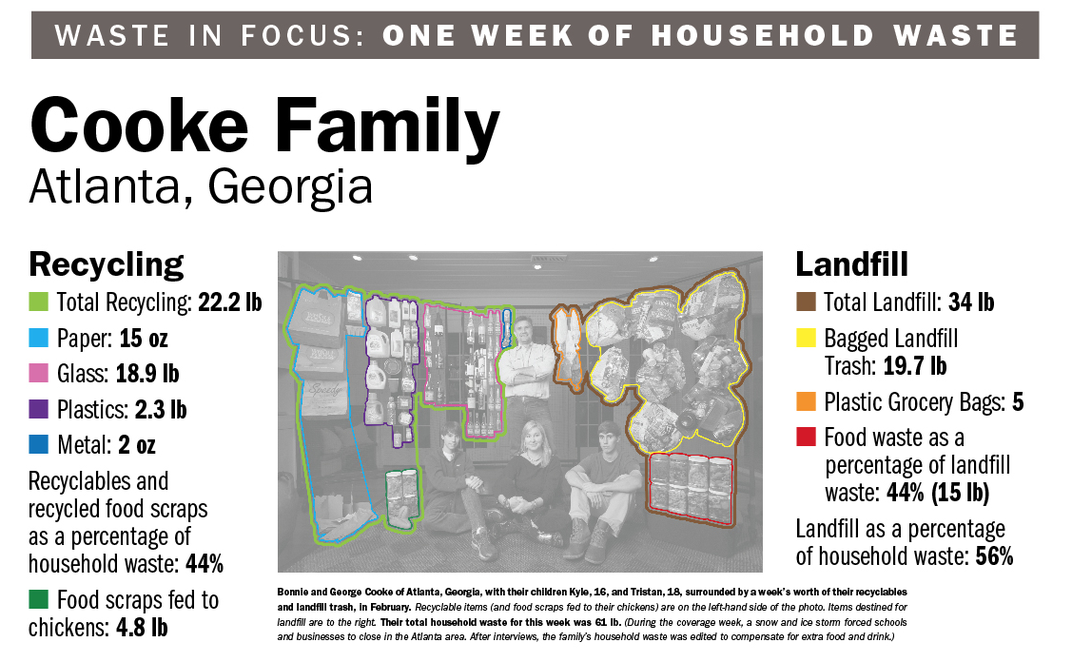
“There are a lot of surprises when you look at these pictures and compare one to the other, but it’s not really about comparing families as to which was the better recycler or which is the more environmental family,” says Menzel.
Every family followed the rules of their city or municipality, but some cities are ahead of the curve in terms of waste regulations. Menzel and D’Aluisio visited local recycling facilities to figure out how everything worked, and he points to San Francisco as a stand out. The city diverts 80 percent of its waste toward recycling and compost. Unsurprisingly, the two San Francisco families sent only 7 and 11 percent of their household waste to the local landfill.
But rather than conveying a soapbox message that people should just recycle more, Menzel and D’Aluisio hoped to simply present information, allowing the viewer draw their own conclusions. “You can’t really preach to people and tell them what to do,” says Menzel. “But, you can show them in a non-polemical way what is better for their city, for their environment, for the planet.”
Photos and data from the project can be viewed on the Waste in Focus website, and a photo exhibit will be on view in New York’s Union Square on Earth Day, April 22, 2014.
Editor's Note, April 15, 2014: This story has been clarified to indicate that Menzel and D'Aluisio used bird netting, not fish nets on the clothes racks.
/https://tf-cmsv2-smithsonianmag-media.s3.amazonaws.com/accounts/headshot/Screen_Shot_2014-01-27_at_12.05.16_PM.png)
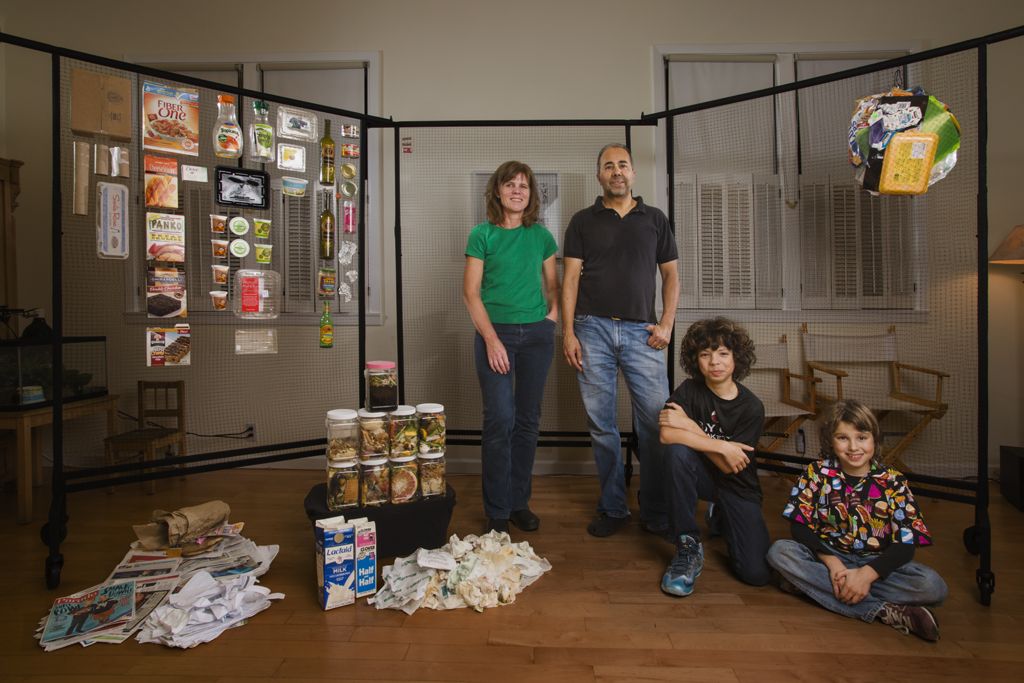
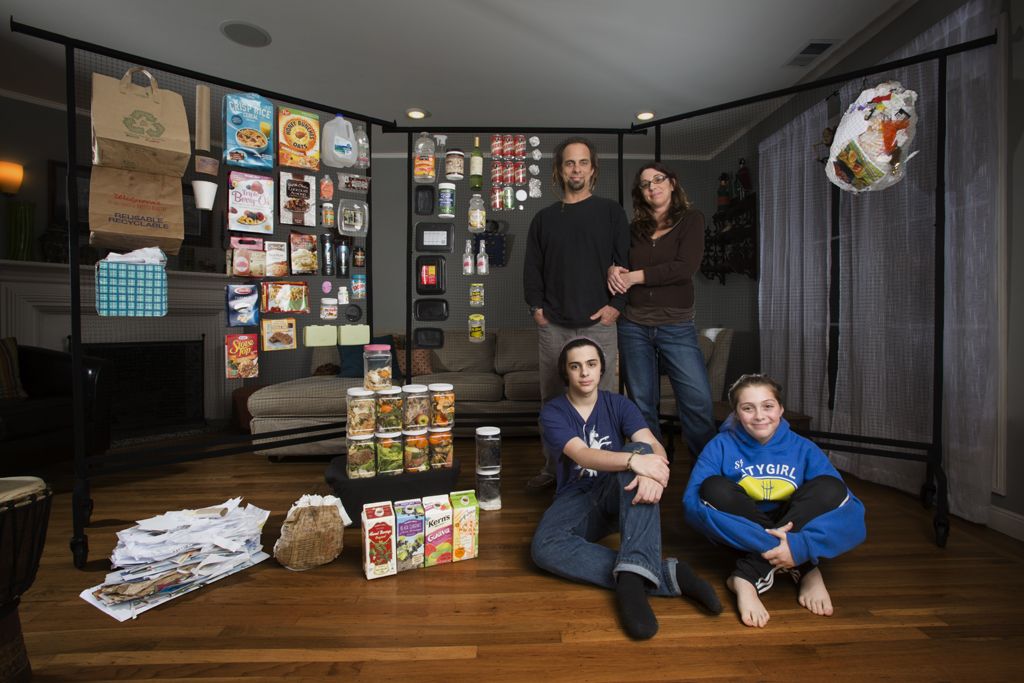
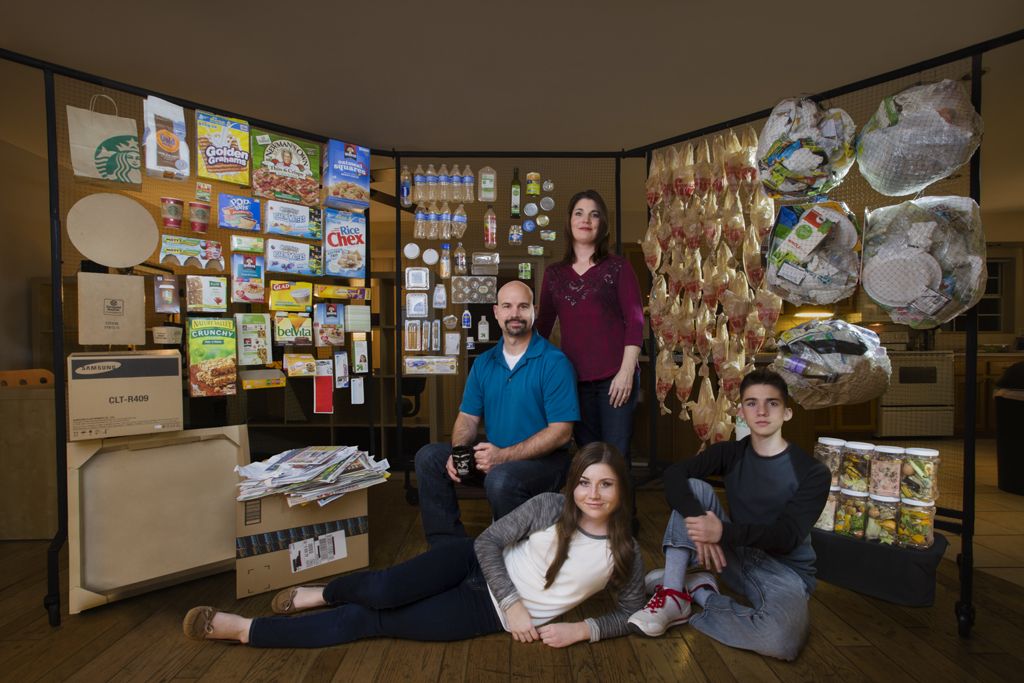
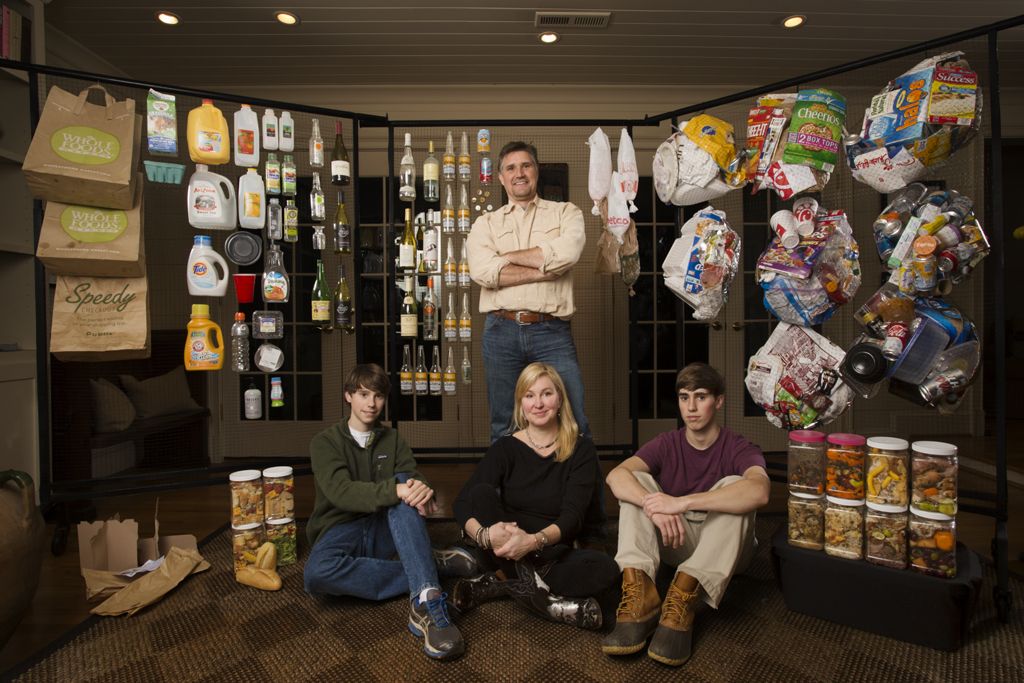
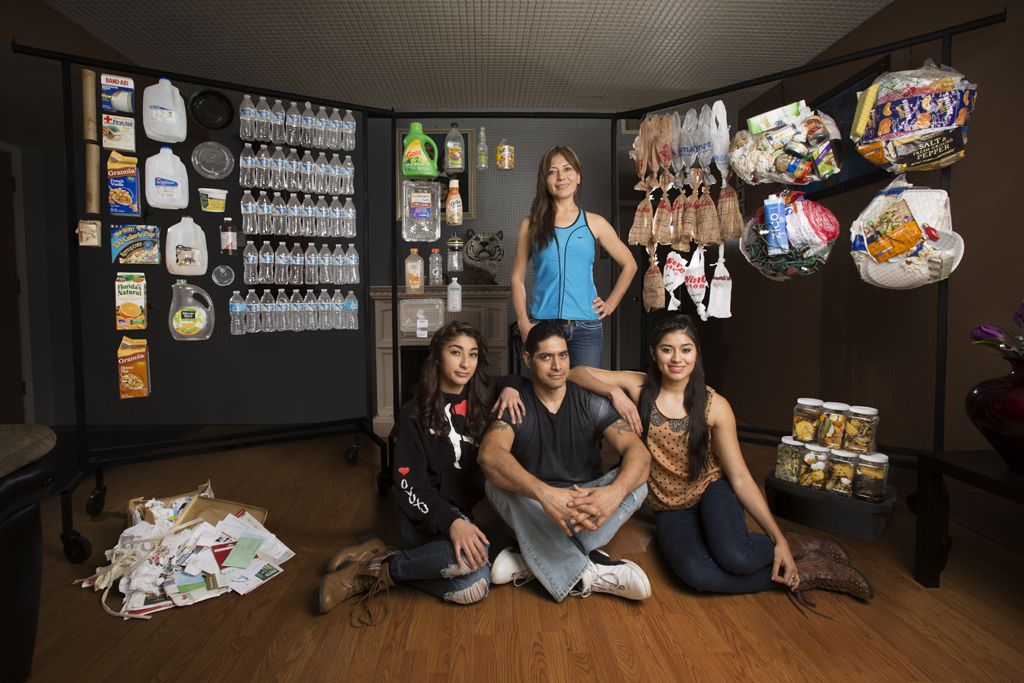
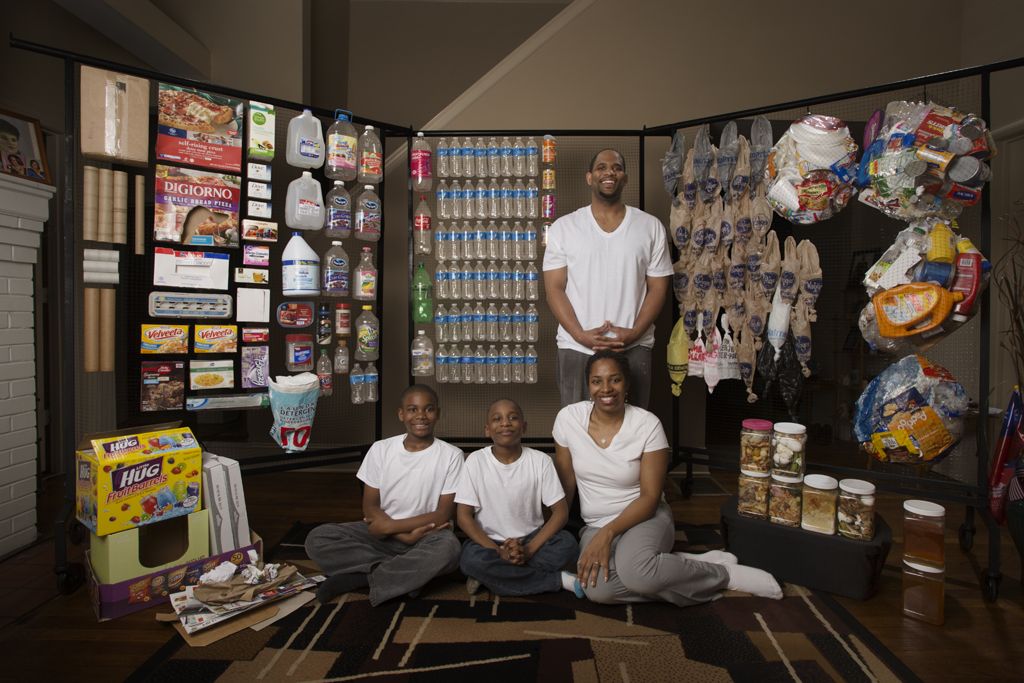
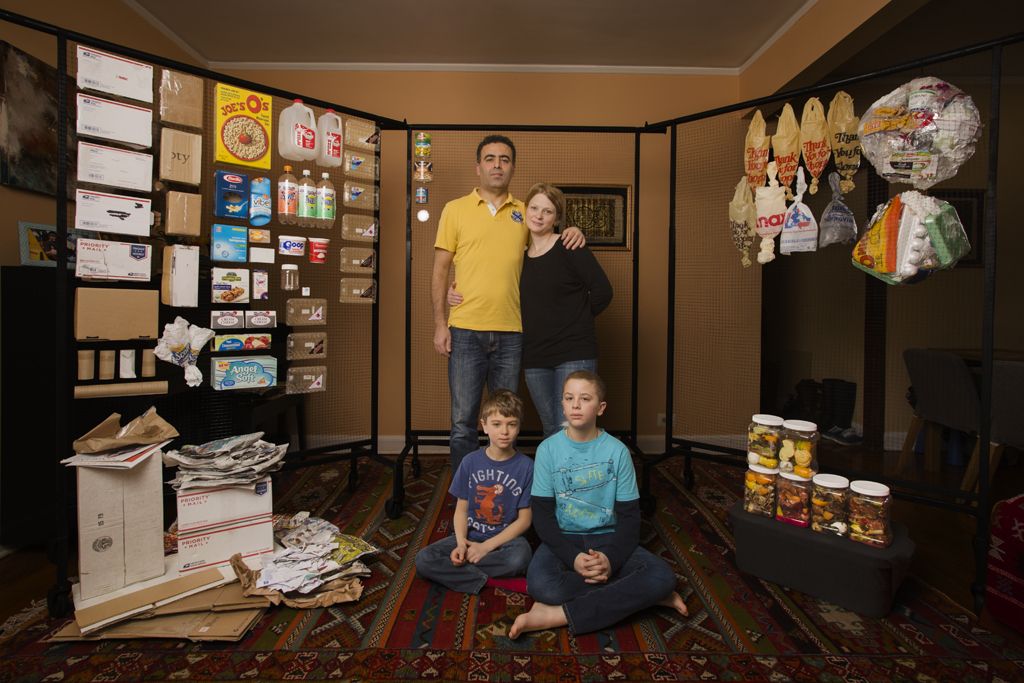

/https://tf-cmsv2-smithsonianmag-media.s3.amazonaws.com/accounts/headshot/Screen_Shot_2014-01-27_at_12.05.16_PM.png)